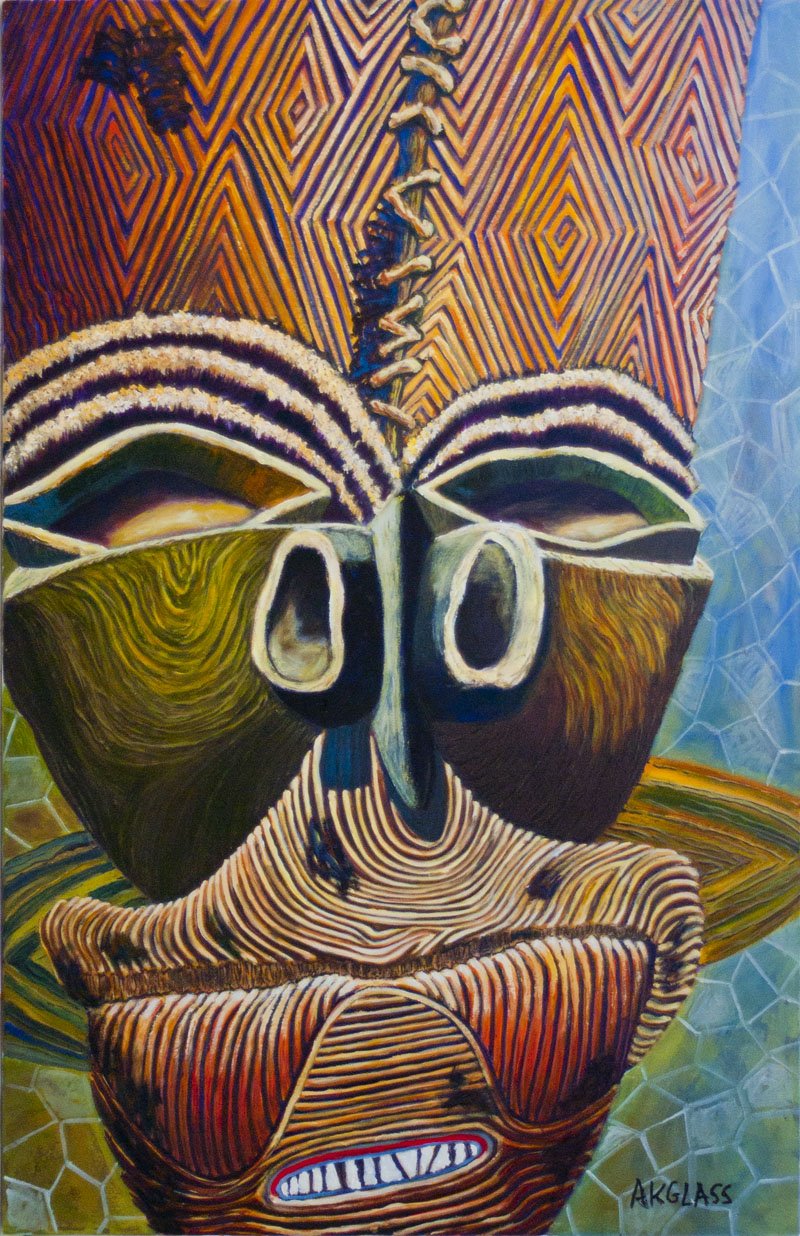 Image 1 of 1
Image 1 of 1


Hippo Emerging Mask
Painting of an African Mask
Unframed Oil on Canvas Original
40" x 26"
Batcham Bamileke People, Cameroon
The Bamileke is the native group which is now dominant in Cameroon's West and Northwest Regions. It is part of the Semi-Bantu (or Grassfields Bantu) ethnic group. The Bamileke are regrouped under several groups, each under the guidance of a chief or fon. The hippopotamus concept for this mask spread among several West African peoples. It originated with the Baoulé People.
Legend goes that in the 17th century the Baoulé left present-day Ghana and traveled west into present-day Côte d'Ivoire under the lead of Queen Pokou. According to oral tradition, the Baoulé were forced to leave Ghana when the Ashanti rose to power. While they were fleeing for their lives, they came to the Komoe River, which they were unable to cross. With their enemies chasing them, they began to throw their most prized possessions into the river. It came to the Queen's attention that their most valuable possession was her son. The Queen realized that she had to sacrifice her son to the river and threw him in. Upon doing so, hippopotami rose from the river and allowed them to cross, saving their lives. After crossing, the Queen was so upset about losing her son that all she could say was "baouli," meaning "the child is dead." From that point on, they were known as the Baoulé.
One in a series of eleven paintings inspired by tribal African masks in museums and private collections. They were in use during the 19th and early 20th centuries.
Painting of an African Mask
Unframed Oil on Canvas Original
40" x 26"
Batcham Bamileke People, Cameroon
The Bamileke is the native group which is now dominant in Cameroon's West and Northwest Regions. It is part of the Semi-Bantu (or Grassfields Bantu) ethnic group. The Bamileke are regrouped under several groups, each under the guidance of a chief or fon. The hippopotamus concept for this mask spread among several West African peoples. It originated with the Baoulé People.
Legend goes that in the 17th century the Baoulé left present-day Ghana and traveled west into present-day Côte d'Ivoire under the lead of Queen Pokou. According to oral tradition, the Baoulé were forced to leave Ghana when the Ashanti rose to power. While they were fleeing for their lives, they came to the Komoe River, which they were unable to cross. With their enemies chasing them, they began to throw their most prized possessions into the river. It came to the Queen's attention that their most valuable possession was her son. The Queen realized that she had to sacrifice her son to the river and threw him in. Upon doing so, hippopotami rose from the river and allowed them to cross, saving their lives. After crossing, the Queen was so upset about losing her son that all she could say was "baouli," meaning "the child is dead." From that point on, they were known as the Baoulé.
One in a series of eleven paintings inspired by tribal African masks in museums and private collections. They were in use during the 19th and early 20th centuries.
